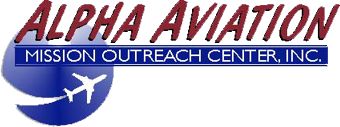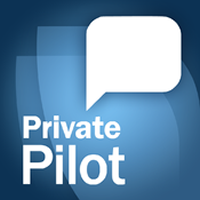Private Pilot
Get your Private Pilot Certificate with us!
Earn your Private Pilot License (PPL) in a Cessna 172, one of the safest and most popular aircraft ever built, and some of the most affordable to fly! The Private Pilot Certification Course allows you to use the airplane for your pleasure, recreation, or business trips, as well as carry passengers.
Each course is exactly the same, but we offer different aircraft to suit your needs and budget. For specific information and pricing on each course, click the images below.
The Private Pilot Certification Course allows the pilot to use an airplane for his/her pleasure, recreation, or business trips and carry passengers. The Approved Private Pilot Course offered by Alpha Aviation can be completed in as little as 30 days; however, on average and at a leisurely pace expect to complete this program in 5 months or longer. It’s up to you and whatever fits your schedule and financing.The minimum requirements for the FAA are 40 hours total flying time, of which 20 hours can be solo. Total Time: 40 hours minimum which consists of at least 20 hours minimum of flight training with an instructor on the Private Pilot areas of operation including:
- 3 hours of cross country flight training in a single engine airplane;
- 3 hours of night flight training in a single engine airplane, that includes at least:
a) 1 cross country flight of over 100 nm total distance; and
b) 10 T/O’s and 10 landings to a full stop with each involving a flight in the traffic pattern at an airport. - 3 hours of flight training by reference to instruments in a single engine airplane; and
- 3 hours of flight training in a single engine airplane within the 60 days prior to the practical test.
Solo: 10 hours minimum of solo flying in a single engine airplane on the Private Pilot areas of operation including:
- 5 hours of solo cross country flying;
- 1 solo cross country flight of at least 150nm total distance with full stop landings at 3 points and one segment of at least 50nm between T/O and landings; and
- 3 T/O’s and landings to a full stop at an airport with an operating control tower.
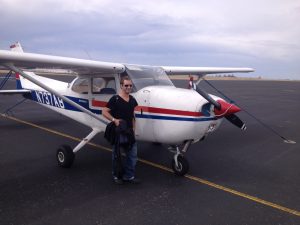 There are three primary certificates, commonly called licenses, that you can earn in order to enjoy the privileges, challenges, and beauty of flying: the sport pilot, recreational pilot, and private pilot certificates. To be eligible to receive either certificate in a single-engine airplane, you must meet a few minimum requirements.
There are three primary certificates, commonly called licenses, that you can earn in order to enjoy the privileges, challenges, and beauty of flying: the sport pilot, recreational pilot, and private pilot certificates. To be eligible to receive either certificate in a single-engine airplane, you must meet a few minimum requirements.
Learning to fly
Whatever certificate you decide to earn, you’ll need to meet certain requirements for aeronautical knowledge, flight proficiency, and experience.
You must:
- Be 16 years old to fly solo.
- Be 17 years old to receive your pilot certificate.
- Read, speak, and understand English.
- Hold at least a third-class medical certificate for private and recreational certificates. Sport pilots must hold at least a current and valid U.S. driver’s license.
Which certificate you choose to earn depends on why you want to fly. The recreational certificate is a good choice if you plan to fly locally for fun at your home airport and don’t foresee traveling large distances by airplane. The sport pilot certificate may be best for you if you plan on flying smaller, two-seat airplanes. If you plan an aviation career or want to fly long distances for business or pleasure, the private pilot certificate is the better choice. You can start with a recreational or sport pilot certificate and later receive the additional training for a private certificate. A table is provided at the end of this section to help you compare the types of certificates.
Private pilot certificate: The driver’s license of the sky
Private pilots can fly a variety of aircraft and travel almost anywhere in the United States.
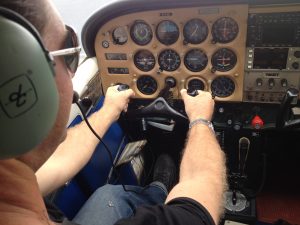 A private pilot certificate is like a driver’s license. It allows you to fly almost anywhere in the United States and even outside the United States when you comply with regulations of the foreign country where the aircraft is operated. You can carry any number of passengers, and you can share certain operating expenses with your passengers. A private pilot has fewer limitations than a recreational or sport pilot. Although there are currency and medical requirements to make sure you stay proficient and healthy, only a few other factors affect when and where you can fly. Once you earn your license, you are free to wander around in the skies below 18,000 feet to your heart’s content. You might take the family on a trip to see relatives in a distant state or use an airplane to shorten the time it takes to make business trips to another city.
A private pilot certificate is like a driver’s license. It allows you to fly almost anywhere in the United States and even outside the United States when you comply with regulations of the foreign country where the aircraft is operated. You can carry any number of passengers, and you can share certain operating expenses with your passengers. A private pilot has fewer limitations than a recreational or sport pilot. Although there are currency and medical requirements to make sure you stay proficient and healthy, only a few other factors affect when and where you can fly. Once you earn your license, you are free to wander around in the skies below 18,000 feet to your heart’s content. You might take the family on a trip to see relatives in a distant state or use an airplane to shorten the time it takes to make business trips to another city.
One restriction to a private pilot’s freedom of flight comes from Mother Nature—the weather. You can fly in some weather conditions but not others, at least without additional training. As a private pilot, you can’t fly in the clouds unless you earn an instrument rating: If it’s raining outside and you can’t see the neighbor’s house through the fog, you shouldn’t be wandering around in the sky unless you’ve been trained in the fine art of flight in instrument meteorological conditions.
With a private pilot certificate, you can fly at night as long as you have received the required night training. Training for night flying is almost always included as part of a private pilot training curriculum. Without a doubt, a crystal-clear, moonlit night is one of the most spectacular and beautiful times to fly. Most pilots start out with their private pilot certificate.
Sport pilot certificate: Simpler training, lighter aircraft
Sport pilots may fly two-seat aircraft called light sport aircraft.
The sport pilot certificate was created in 2004 as a simpler, less expensive way to fly. This certificate requires fewer hours of training (20) than either the private pilot or the recreational pilot certificate, and sport pilots enjoy many of the same privileges as private pilots. The certificate does, however, come with limitations. Sport pilots may only fly smaller, slower one- or two-seat aircraft classified as light sport aircraft; during good weather; and not at night.
A sport pilot certificate can cut the costs of training and get new pilots in the air faster. Light sport aircraft generally have lower operating costs than comparable larger aircraft, and while sport pilots need a current and valid driver’s license, they do not need to go through the recurring medical certification process. This license may be right for you if you plan to fly recreationally and don’t plan on taking more than one passenger with you. Plus, it’s easy to step up to a private pilot certificate with some additional training.
Recreational pilot certificate: Fun flying close to home
Recreational pilots can fly the most common general aviation aircraft, but are limited in how far and where they may fly unless they get further training.
Is the recreational pilot certificate right for you?
Get more details on the recreational pilot certificate, as well as advice on how to decide if it’s a good fit for you.
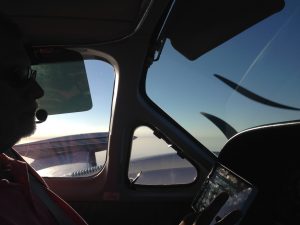 Recreational pilots may fly larger aircraft than sport pilots, but they have more limitations on where they may fly. The recreational pilot certificate requires fewer training hours than the private certificate; as a recreational pilot you receive fewer hours of cross-country navigation training because you must remain within 50 nautical miles of your home base unless you have additional endorsements. You also won’t have to learn to fly in airspace requiring communications with air traffic control. And night operations and flight by reference to instruments, which are part of the private pilot training, are eliminated from the recreational pilot’s curriculum.
Recreational pilots may fly larger aircraft than sport pilots, but they have more limitations on where they may fly. The recreational pilot certificate requires fewer training hours than the private certificate; as a recreational pilot you receive fewer hours of cross-country navigation training because you must remain within 50 nautical miles of your home base unless you have additional endorsements. You also won’t have to learn to fly in airspace requiring communications with air traffic control. And night operations and flight by reference to instruments, which are part of the private pilot training, are eliminated from the recreational pilot’s curriculum.
Because of the reduced training requirements, recreational certificate holders are subject to certain limitations and restrictions. As a recreational pilot, you can carry only one passenger in single-engine aircraft of 180 horsepower or less with up to four seats. It won’t be a problem finding aircraft that meet the aircraft type requirements. Most general aviation aircraft that are inexpensive to rent or purchase fall into the above-mentioned categories.
As a recreational pilot, your flying must be during daylight hours in good weather. You can fly no higher than 10,000 feet unless you happen to be flying over terrain, such as a mountain, that is higher than 10,000 feet.
Earning a recreational pilot certificate may be a shorter route to flying than the private pilot certificate, with access to many common aircraft that sport pilots may not fly. It is also a stepping stone to help you build experience should you decide to get your private pilot certificate later. Depending on your point of view and what you plan to do with your flying, the restrictions may not seem limiting at all.
If you’re not sure which type of certificate is right for you, head out to your local airport! Talk to management of the local flight school or flying club. What types of aircraft do they have? How much would you need to talk to air traffic control in your area? Tell them what your goals are for flying, and they can help you choose the right path to achieving them.
Basic Requirements
Here are just a few of the basics requirements for the Private Pilot License. We’ll discuss what’s entailed in each of these requirements later in this section.
- You must be able to read, speak, write, and understand the English Language
- You must be able to obtain at least a 3rd class FAA medical certificate
- You must be 16 years old to get your student pilot license
- You must to be 17 years old to get your private pilot license
- You have to acquire 40 hours total flying time
- 10 hours of the 40 hours must be solo (alone) flight time
- 5 hours of the 10 solo must be cross- country (flying from one airport to another)
- You must pass the FAA Private Pilot written exam
- You must pass the Private Pilot Oral and Practical Exam
The Student Pilot License & Medical Certificates
Your can get your student pilot license at the same time you apply for a medical certificate. They are combined into one certificate for student pilots and they share a common application. Your flight instructor can give you a list of FAA certified medical examiners in your area, and they take care of all the necessary paper work after the exam. At the end of the exam the doctor removes a portion of the form you filed out and this serves as both your student pilot license and medical certificate.
As we mentioned earlier you need to be 16 years of age to get your student pilot license. This is because you have to be 16 years of age to solo, and you instructor must sign off or verify that you are safe to fly solo on your student pilot license. You can start flying at any age but it’s a good idea not to start much earlier than 16 because you can’t solo until that age and you can’t get your private license until your 17. Starting earlier makes your training process longer and more expensive. However don’t let it stop you from taking and introductory flight. That way you can’t decide if flying is something you really want to do.
Training
The first few lessons of your flight training are primarily familiarization to the aircraft you will be conducting your training in. You’re not worrying about learning rules or procedures you learn the basics of maneuvering the aircraft under visual flight rules or VFR. VFR encompasses flying the aircraft by looking outside and using visual cues for aircraft control and navigation.
After the your first few flights your training focuses on getting you ready for your first solo flight. You learn about the airport traffic pattern and radio communication with air traffic control or ATC. Once you can fly the traffic pattern and talk on the radio unassisted, its time for your instructor to turn you lose for your first solo. This usually consists of a few take-off and landings in the airport traffic pattern. After your initial solo you will be let lose to practice aerial manoeuvres on your own within close proximity to the airport you are learning to fly.
After your solo you move on to cross country navigation. You learn various elements of flight planning, navigation via reference to checkpoints on the ground, and fuel management. You usually go on several cross countries with your instructor to put everything you’ve learned to practice. Once you can find your way without assistance from the instructor, he or she will then sign you off for solo cross country flight. Then you do a few solo cross-country flights to build your solo and cross country time in addition to your confidence.
After cross-countries there isn’t much left until your practical test or check ride as it’s more commonly known. Your instructor brushes you up on your aerial manoeuvres such as stalls, steep turns, and slow flight. There is also a requirement for flight at night; night cross-country and a few hours practice at flying by sole reference to your flight instruments. Also important are your emergency procedures like dealing with engine failures, loss of radio communications and inadvertent flight into poor weather or clouds.
After you meet all the hour requirements and your instructor is confident in your abilities you receive another sign off in your logbook saying you meet the requirements for the private pilot and your instructor feels you are ready to take the private pilot check ride. You are then sent to a FAA examiner for the oral and practical test.
Testing
So what are all these tests and check rides about? Well they’re not all that bad, they can be a challenge, but the reward is well worth it. There are three main tests you must pass in order to obtain your private license. They are the FAA Written, a computer test of aeronautical knowledge, the Oral Exam which is a one on one verbal questioning by the FAA examiner and the Practical Exam which is the actual flight test were you demonstrate your flying and navigation skills to the FAA examiner. Below is a little about each of the Tests.
The FAA Written
In addition to your flight training you will receive many hours of ground instruction either from your flight instructor or most flight schools have an organized ground school class that meets on a regular basis. Either way you learn about the many aeronautical knowledge areas that are covered on the FAA written exam. These areas include, aerodynamics, Federal Aviation Regulations (FAR’s), airspace, navigation, cross-country planning, weather, (very important for the VFR pilot) and performance calculations such as take-off and landing distances and weight and center of gravity calculations. There are many training aides to assist you in your studies including videos, computer programs, review books and hopefully this website.
The FAA Oral Exam
During the oral exam the FAA examiner assesses your level of aeronautical knowledge through verbal questioning. The examiner usually has you plan a cross-country from the airport where you are taking the check ride to some other airport of their choice. They use your planning to ask questions to see if you know what is required to be a safe pilot. They might ask you questions about the airspace you will be flying through on your trip, how long the flight will take and how did you come up with computed numbers on your flight plan. Once the examiner is satisfied at your level of knowledge you will then proceed to the practical portion of the check ride
The FAA Practical Exam
The practical exam is where it all comes together. You finally get the chance to show the examiner that you have the skills to be a private pilot. The flight usually starts out on the flight planned for the oral exam. You will usually fly to the first few checkpoints to demonstrate your cross-country navigation skills. Satisfied with the navigation the examiner will then have you demonstrate the required aerial maneuvers such as stalls, steep turns, flight a slow speeds. Somewhere along the way the examiners will pull the throttle back to simulate and engine failure to see you know your procedures for making and emergency landing. Once that is accomplished successfully you will then head back to the airport and practice some landings.
Assuming all goes well at the end of the flight the examiner fills out your temporary license (a permanent one comes in the mail) and you are now a private pilot. You are officially licensed as a Private Pilot free to fly on your own. Some say you are now licensed to learn
Costs
All this stuff sounds like fun huh? Well what’s it gonna cost me? Well that depends on a lot of things. For one the minimum amount of flying required to get your private is 40 hours, but most people usually do an average of about 60 hours. So, 40 is the minimum but I would plan on about 60 hours. Aircraft rental for single engine airplanes can range from 85 to $275 and hour plus when you are flying dual (with and instructor) you have to pay the instructor fee which can range anywhere from 45 to $80 an hour and up. So lets look at an example of how much is costs
- 50hrs aircraft rental @ $125hr =$6,250
- 40hrs of instruction @ $50=$2,000
Total Price=$8,250 (This figure is only an example)
This figure can be more or less depending on how many hours of training it takes you, (every person will be different) and how much your rental and instructor rates are. Not included also are the cost of training supplies such as books, maps, headsets, log books, etc. Also your instructor charges a certain amount for ground instruction or if you elect to take a ground school that also has a fees associated with it. Your local flight school will be able to give you more exact numbers on the costs in your area
![]()
Ready to take the next step to start your flight training, or just have some questions? Contact us Today! and we will be more than happy to help!
